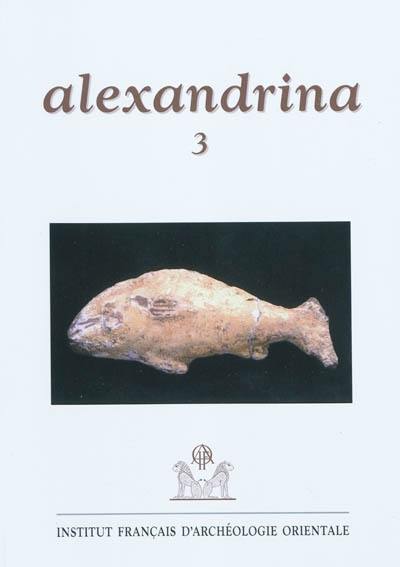
Fiche technique
Format : Broché
Nb de pages : 470 pages
Poids : 1405 g
Dimensions : 20cm X 28cm
ISBN : 978-2-7247-0525-6
EAN : 9782724705256
Alexandrina. Vol. 3
Quatrième de couverture
Ce troisième volume collectif de la série des Alexandrina, le 18e tome des Études alexandrines, rassemble 13 articles articulés autour de trois thèmes principaux, avec le souci premier de publier des documents inédits sur Alexandrie : des documents appartenant aux collections du Musée gréco-romain et d'autres provenant des fouilles de sauvetage urbain menées par le Centre d'études alexandrines (CEAlex). Six études couvrent sept siècles de sculpture et d'iconographie alexandrines, depuis la sculpture hellénistique des Basileia jusqu'à un groupe classicisant, datant du IVe siècle apr. J.-C. en passant par une statue cuirassée de Septime Sévère. D'autres collections du Musée sont examinées, avec la constitution des médailliers et le corpus d'objets miniatures en plomb et des ostraca coptes. Du côté des fouilles, la mise au jour de maisons macédoniennes a livré un riche mobilier et on en trouvera ici un premier aperçu, avec des appliques de poissons dorés. L'urbanisme alexandrin suscite deux études, l'une sur les murailles, l'autre sur la trame des rues. La chôra est aussi présente, avec la publication de bains romains tardifs qui ajoutent une nouvelle forme typologique aux autres monuments de ce type dans la région.
This, the third collective volume of the Alexandrina series and the 18th in the Études Alexandrines collection, brings together 13 articles turning around three main themes with the principal aim of publishing previously unseen documentation regarding Alexandria. We present documents from the archives of the Graeco-Roman Museum and
others referring to the urban salvage excavations undertaken by the Centre d'études alexandrines (CEAlex). There are six studies covering seven centuries of Alexandrian sculpture and iconography, from the Hellenistic sculpture of the Basileia via a cuirassed statue of Septimus Severus to a classical-style group dated to the 4th century AD. Others of the Museum's collections are studied with articles on the coins and medals, the corpus of small lead objects and Coptic ostraca. From the excavations, the unearthing of Macedonian housing brought to light a wealth of archaeological material some of which is presented here for the first time, including guilded appliqué fish. Aspects of Alexandria's urban fabric are also examined in a couple of studies ; one concerns the defensive walls while the other looks at the street network. And the chora is not forgotten with the publication of some late Roman baths that add a new typological form to the other monuments of this kind within the region.





